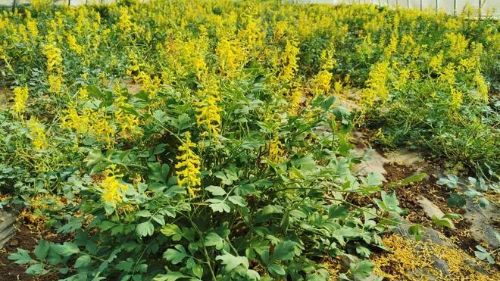At the end of the year, when the flavor of the year is getting stronger
2023-01-04
Xiaohan Xiaohan is the fifth solar term in winter and the penultimate of the twenty-four solar terms. It is a small cold day before or after January 5 of the Gregorian calendar every year when the sun reaches 285 degrees of longitude. The cold air has been cold for a long time. After the slight cold, the climate in China has entered the coldest period of the year. The early morning is long and the cold weather is mild. "The early morning is long, and it is sunny and overcast in Jinli." In the light cold season, the northwest wind blows in most parts of China and is often affected by the Siberian cold current, so the temperature fluctuates greatly. Before and after the mild cold, the lowest temperature in the southern region south of the Huaihe River in the Qinling Mountains in China was about - 10 ℃, while the lowest temperature in the northern part of South China was rarely lower than - 5 ℃, especially in the southern part of South China. In the middle of winter, the coldest area in China is the northern part of Heilongjiang, with the lowest temperature reaching about - 40 ℃. In the long historical process, people not only learned to resist the cold of ice and snow, but also learned to use ice and snow, watch ice and snow, and find fun in ice and snow. In the northern provinces of China, the ice age is very long after winter. In the cold days of March 9, most of the areas with particularly thick ice have natural ice rinks for people to play. Carrying out ice sports is the main outdoor activity in the north. Skating, skating, skating carts and so on are different. The Xiaohan solar term is in the twelfth lunar month. In many parts of China, it is popular to drink "Laba porridge" on the eighth day of the lunar month. It is the same Laba porridge, but it varies from north to south due to different regions. Laba porridge in the north includes yellow rice, red rice, white rice, millet, chestnuts, red beans, jujube paste, etc. Some places are decorated with peach kernels, almonds, melon seeds, peanuts, pine nuts, raisins, etc. The Laba porridge in the south is joined with lotus seeds and longans. In the season of plum blossom exploration with faint fragrance floating, "the shadows are thin, the water is clear, and the faint fragrance is floating at dusk." In the cold season, the wintersweet has opened and the red plum is in bud. "The plum blossom is three times as white as the snow, but the snow loses its fragrance." Although plum blossoms don't like cold, they are the most tolerant of the cold. It is an elegant and happy thing to look for plum blossoms in the snow in the light cold season and see the frost and snow in the cold plum wind. "Don't blame Yan Ningche for wanting to pay in spring and winter". The coldest time also reminds people of the warmth when the cold ends. The Great Cold is "another year after the Great Cold". In the cold season, it is the end of the year, and the growing flavor of the year has diluted the cold of winter. Great Cold is the last of the 24 solar terms. Before and after January 20 of the Gregorian calendar, when the sun reaches 300 degrees of longitude, it is a severe cold. Like the small cold, the great cold is also the solar term indicating the cold degree of the weather. "Cold weather is mild and severe". During the severe cold period, the cold wave moves southward frequently, which is a very cold period in most regions of China. The wind is strong and the temperature is low, and the snow does not melt on the ground, presenting a scene of ice and snow everywhere. The period of mild cold and severe cold is the period of less rainfall in a year. Generally speaking, during the Great Cold Solar Term, the precipitation in most parts of South China is 5-10 mm, while that in the mountains of the Northwest Plateau is only 1-5 mm. South China is dry in winter, and overwintering crops consume less water during this period, so the contradiction between farmland water supply and demand is generally not prominent. In case of little rain and snow, different farming habits and conditions shall be adopted in different regions
Edit:qihang Responsible editor:xinglan
Source:http://paper.people.com.cn/rmrb/html/2023-01/04/nw.D110000renmrb_20230104_1-08.htm
Special statement: if the pictures and texts reproduced or quoted on this site infringe your legitimate rights and interests, please contact this site, and this site will correct and delete them in time. For copyright issues and website cooperation, please contact through outlook new era email:lwxsd@liaowanghn.com
 Recommended Reading Change it
Recommended Reading Change it
















